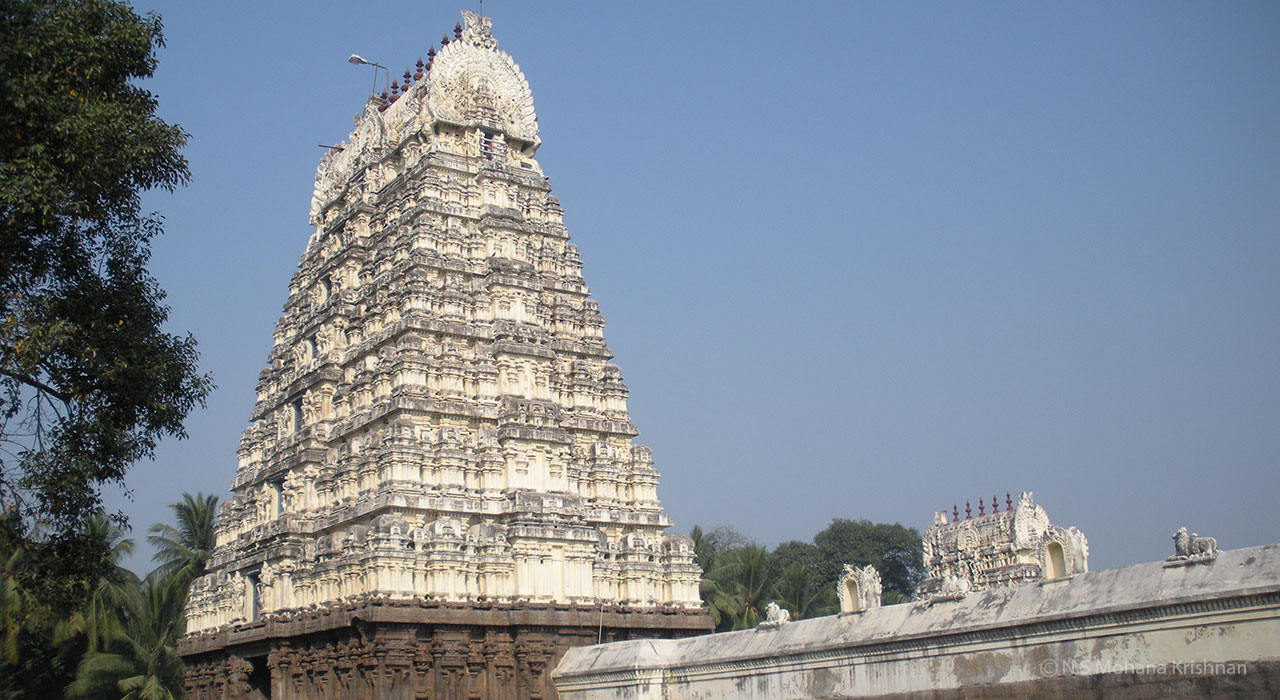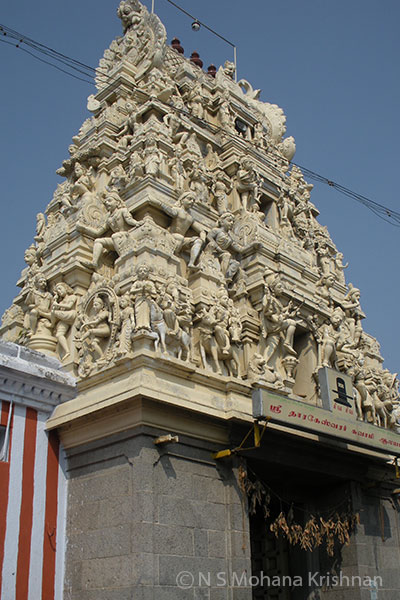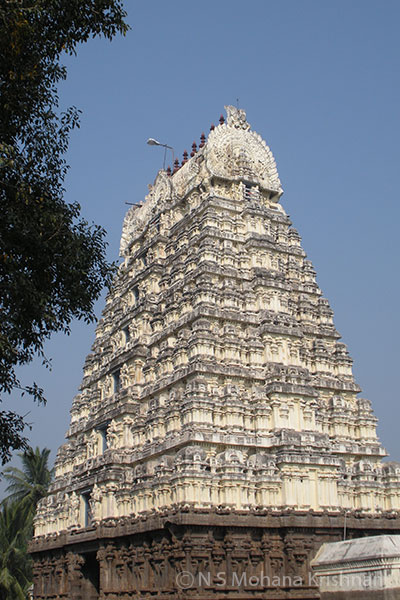Jalakandeswarar, facing east
Jalakandeswarar, Vellore
Saivite Temples – Vellore District

God
Goddess
Akilandeswari, facing south
Other Deities
Vinayaka, Muruga, Nataraja, Mahavishnu, Brahma, Mahalakshmi, Saraswathi
Jalakandeswarar Vellore is a large east facing temple with a 7 tiered Rajagopuram in the south entrance. This is followed by a large and spacious outer Prakaram. At the entrance to the inner Prakaram in the south is a smaller 5 tiered Gopuram. Excellent sculptures can be seen all around in the Gopurams, Mantapas and Pillars. Jalakandeswarar Vellore is situated in the middle of a large pond which forms a moat on all sides. There is an earthern lamp on the Balipeedam which is said to revolve to the touch of some people. A lamp called the Navasakthi Jyoti is in front of the goddess with the Jyoti in the center and 8 others around it. Above this is another lamp, Nakshatra Deepa, with 27 lights which are supposed to represent the 27 celestial stars.
Holy Water (Theertham) – Ganga Gowri Theertham, Thamarai Pushkarini
Holy Tree (Sthala Vriksham) – Vanni (Proposis cineraria)



History
Jalakandeswarar Vellore Temple was built during the reign of the Vijayanagara King Sadasivadeva Maharaya (1540 – 1572 AD) inside the Vellore Fort and is a fine example of the Vijayanagara style architecture. Jalakandeswarar Vellore was damaged during the Muslim invasion of the Vellore Fort after which worship in the temple was stopped. Out of fear the main deity was moved away to the Jalakanda Vinayakar Temple in Sathuvacheri for safe keeping. Jalakandeswarar Vellore was used as an arsenal for nearly 400 years. In 1921, the Vellore Fort was handed over to the Archaeological Survey of India (ASI) for maintenance. At that time, Jalakandeswarar Vellore was not used for worship, and the ASI was keen to maintain this status quo. However, in 1981, the deity was smuggled inside the fort and re-installed inside the temple and worship was started. In 2013 the temple administration was taken over by the Tamilnadu Government.
Legend
According to legend there used to a giant ant-hill surrounded by stagnant water at the location where the sanctum sanctorum of Jalakandeswarar Vellore now stands. A Shiva Lingam was placed in this water around the ant hill and worshiped. Chinna Bommi Nayaka, a Vijayanagar chieftain, who was controlling the fort had a dream where Lord Shiva asked him to build a temple at that location. Nayaka demolished the anthill and built the temple. Since the Lingam was surrounded by water the deity was called Jalakandeswarar. Behind the Nandi statue, there is an earthen lamp, which is said to revolve when some people place their hands on it. The revolution is said to indicate that their wishes have been granted.
Directions
Jalakandeswarar Vellore is in the Vellore Fort inside the town and is easily reachable.
Stay and Food
Vellore has many restaurants all along the service lane of the Highway and near the bus stand.
